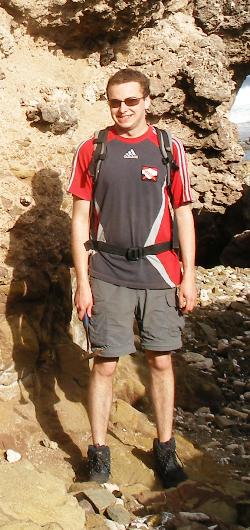
Iain Neill* believes that while no single model to date fully explains the Caribbean Plate, this is no reason to forsake well-established and fundamental tectonic laws.
Geoscientist Online 18 December 2009
A cursory glance at the literature shows that the Caribbean is a hot topic. The kerfuffle over the Origin of the Caribbean Plate (
Geoscientist v.19.9), however, bears little relationship to the fervent debate that occasionally erupts at workshops, conferences, or on paper, in part around the many facets of my own supervisors’ (Andrew Kerr and James Pindell) models of how the Caribbean has evolved! I wrote in November (
Geoscientist v.19.11) that the Origin debate should have finished years ago. That debate is being re-stoked by those who do not even believe in the existence of Plate Tectonics. Can this mess be put in the garbage can for once and for all?
In defence of Plate Tectonics
The present understanding states that oceanic crust is generated at mid-ocean ridges, and returns to the depths of the Earth at subduction zones, in tune to the beat of mantle convection. Rock will partially melt in the mantle or lower crust under the right circumstances when decompressed or hydrated. Continental crust has built up over time by addition of magmas and the accretion of oceanic material, seamounts, plateaux, arcs
und so weiter at collisional margins. Plumes may be generated by the rise of material from disturbances within the mantle. The crust shall twist, shear, fold and fault, thicken and thin in response to the movement of plates and the fiery
Play-doh beneath. Numerous processes leave their imprint upon the geochemistry of the rocks involved. Collectively we have the mix of events whose sum total is tectonic geology as we know it – and the existence of these events can be tested scientifically. Thus satisfied, every rock that we pick up, scan, image, blast or zap can then be investigated alongside its neighbours and put into a tectonic context. And so we build up a pattern of local, regional or global Earth history. Thus it has been for over fifty years of intense study. The Caribbean region is not exempt.
The very few remaining in-situ followers would admit our comprehension is not aided by poor exposure; limited access; weathered rocks and incomplete, misused and often inaccurate data. Through time this lack of detailed information has led to the debates we see and ultimately the doubters of the Pacific Origin Paradigm continuing, albeit in my opinion falsely, to have a voice. However, the inability of Pacific Origin workers to produce a self-agreeable explanation of Caribbean geology simply does not reflect a problem with Plate Tectonic theory. Disagreement is eminently resolvable by tweaking the current models as new data is generated, old reviewed and new understandings reached.
In November, I laid out some of the key problems I saw with Keith James’ interpretation of the Caribbean; one that shows unwillingness to see the gamut of facts and interpret them with the eyes of a tectonic geologist, geophysicist or geochemist. I now see in Karsten Storetvedt’s descriptions of the Caribbean a similar problem. His arguments come straight off the back of a reading of the commentary of James and Lorente. He states: “as a wide range of regional and larger scale geophysical and geological information is omitted from their re-evaluation, the arena is open for alternative non-plate tectonic solutions.” The arena would be well and truly shut had he a full appreciation of the available facts about the Caribbean region at the level of detail required. Not once does Professor Storetvedt talk specifically about the ages of rocks, of their chemistry, their inferred tectonic setting and actually challenge what is wrong with the current interpretations. He has not seen beyond his own model of wrench tectonics and ridden roughshod over what we know. Indeed, what of all the other proofs, aside from his bugbear, palaeomagnetism, that show Plate Tectonic theory to be rather sound? What is wrong with what radiometric dating or geochemistry tells us? Or the stories trapped in the sedimentary record, in faunal associations, ophiolites, high-pressure belts and suture zones, even in geophysical surveys?
Such tales are closer to fact than fiction so let us not break convention and instead turn to resolving the history of the Caribbean using plate tectonic means.